Military & Strategy
Originally a military-only term, strategy is now a concept that is now applied to the most diverse domains, like politics, business, and others. Still, its exact definition and field of application is object of debate amongst scholars. I do not intend here to examine the issue and join the discussion; but I need to explain what I will indicate under the term "strategy" (which, after all, is the origin of this site's name). In this regard, I was deeply influenced by Edward Luttwak's book Strategy: The Logic of War and Peace, which illustrates a conceptualization that I will retain in my works. The author distinguishes five levels of strategy:
- The tecnical level revolves around the specific technical details of a weapon system and what it is capable to do on paper.
- The tactical level focuses on battles of relatively limited scale involving small-sized units fighting on a specific terrain.
- The operational level examines the planning and conduct of military campaigns, the "style" of waging war placed along an attrition warfare - maneuver warfare continuum.
- The theatre strategy level concerns a large, single, unitary and coherent battlespace relatively independent from others; and therefore introduces the geographic dimension of strategic warfare.
- Finally, grand strategy refers to the actions (may them be military, diplomatic, economic or of other type) undertaken by a state to preserve its security and pursue its interests; and is thus close to geopolitics.
However, this page is about military affairs & strategy, meaning that here I will focus on how a given weapon system deployed by a state (technical level) impacts the other four strategic levels. As such, I will cover only those platforms that, due to their nature, can have a similar strategic impact; like aircraft carriers, submarines, strategic bombers, ballistic missiles and others. On the contrary, I will not examine the weapons that do not have such importance or have it only to a limited degree; as in the case of assault rifles or IFVs.
I may also examine the military doctrine of a given state and its broader implications. Similar military-centered analyses will appear here and not on the country's dedicated page (or that of the region where it is located). On the contrary, when I will examine a state's Grand Strategy, I will post the report on its specific page (or, again, that of the region).
Additionally, I could possibly write more abstract papers on military doctrines, strategies, or the impact of a given category of weapons systems on warfare; as well as analyses on the today's main military trends or past operations. In this case, the papers will appear on this page.
That said, military issues and strategy remain relevant in today's world. Conflicts exist in many parts of the world, and even though large-scale industrial wars among states seem a thing of the past, nothing excludes that they will not reappear in the future. Many countries are undertaking vast military modernization programmes and the balance of power is continuously shifting. Therefore, is is important to examine and evaluate the impact of these developments to properly assess the risks and understand the reality of state-to-state power plays.
I have always had an interest in strategy and military matters, and my expertise is largely the result of personal readings; even though I had some related courses at university as well.
Warfare Evolved: Quantum Encryption
 Progress in quantum technologies may have far-reaching consequences in the coming decades, including on defence and international security.
Progress in quantum technologies may have far-reaching consequences in the coming decades, including on defence and international security.After writing about quantum radars, in the latest article of the 'Warfare Evolved' mini-series published on Geopolitical Monitor, I explore the strategic impact of quantum encryption.
China seems to be leading the way in this emerging technology, which may render ciphered messaged physically impossible to crack, thus making traditional SIGINT largely obsolete and forcing intelligence agencies to change their approach. The power that will gain the upper hand in this adaptation process will then have a major advantage over its adversaries; but this will also turn the infrastructure underlying quantum-encrypted communication (notably satellites) at risk in case of war.
Photo credit: Processing process I, Brett Renfer, published under Creative Commons Attribution-NonCommercial-NoDerivs 2.0 Generic (CC BY-NC-ND 2.0).
Warfare Evolved: Hypersonic Missiles
 Hypersonic missiles are a new category of weapons that holds an considerable potential and could sensibly impact how great powers will conduct military operations in the years to come.
Hypersonic missiles are a new category of weapons that holds an considerable potential and could sensibly impact how great powers will conduct military operations in the years to come.Capable of flying at more than five times the speed of sound (Mach 5) and of performing evasive manoeuvres, they are practically impossible to intercept using current anti-missile systems.
Adding the fact that they are often capable of carrying nuclear payloads, it is evident why they have caused so much concern.
In the latest part of the 'Warfare Evolved' mini-series published by Geopolitical Monitor (subscription required) I provide an overview of the current development of hypersonic vectors around the world and of how they may affect the strategic balance in the future.
Photo credit: HGV-202F.jpg, Saurav Chaudhari, published under Creative Commons Attribution 2.0 Generic (CC BY 2.0).
Warfare Evolved: Quantum Radar
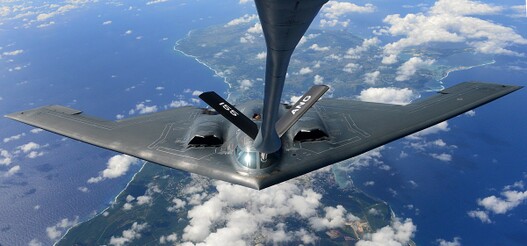
The application of quantum physics to military technology may pave the way to a new type of radar capable of detecting stealth platforms and of nullifying the effectiveness of jamming techniques.
While at the current stage quantum radars are still an experimental technology with significant limitations, they hold a great potential and as they get perfected they may substantially disrupt warfare between great powers.
In my article on Geopolitical Monitor (subscription required) I explore three scenarios on how they may be operationally employed and how this may affect international stability.
Photo credit: B-2 Spirits complete deployment, joint and combined training missions with B-1s, F-22s and Australian allies 170119-F-AI758-075.jpg, Airman 1st Class Jazmin Smith, published under public domain.
Warfare Evolved: Drone Swarms
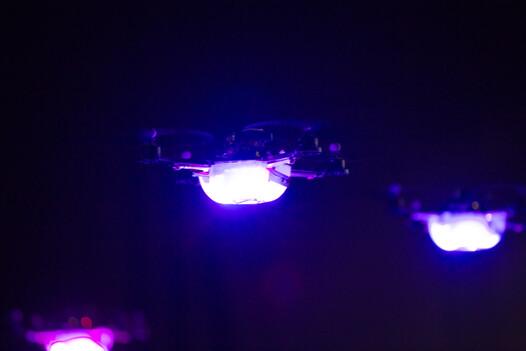 Unmanned vehicles, commonly known as drones, are used to perform a wide array of missions by various armed forces across the world.
Unmanned vehicles, commonly known as drones, are used to perform a wide array of missions by various armed forces across the world.Yet, this may be only the beginning. Technological progress in the fields of AI, robotics and data fusion are paving the way to a new method of using drones on the battlefield: swarming.
This concept entails employing large numbers of autonomous and interconnected drones which share information between them, coordinate their action and react dynamically to changes in the battlespace to complete their mission.
In my latest contribution to Geopolitical Monitor (subscription required) I provide an overview on the strategic effects that swarming will have on warfare. Direct link here.
Photo credit: Swarm Compass, Ars Electronica, published under Creative Commons Attribution-NonCommercial-NoDerivs 2.0 Generic (CC BY-NC-ND 2.0).
Russia’s Military Modernization: Prevailing in Limited Conflicts
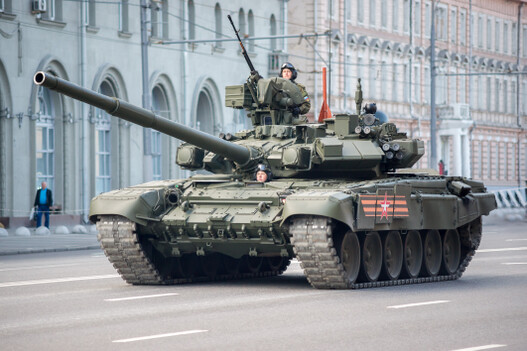 The modernization of the Russian armed forces is an ongoing process which has seen many setbacks.
The modernization of the Russian armed forces is an ongoing process which has seen many setbacks.While it remains globally inferior to the US and NATO in conventional terms, Russia has still managed to sensibly upgrade its military capabilities in relation to its main objective: to prevail in limited conflicts by denying victory to its enemies and forcing an end to the war in terms favorable to its interests.
In my latest publication on Geopolitical Monitor I explore this topic with a particular attention on the role of autonomous systems and hypersonic missiles. Read the article here (subscription required).
Photo credit: T-90C, Dmitriy Fomin, published under Creative Commons Attribution-NonCommercial 2.0 Generic (CC BY-NC 2.0).
The Race for Hypersonic Missiles
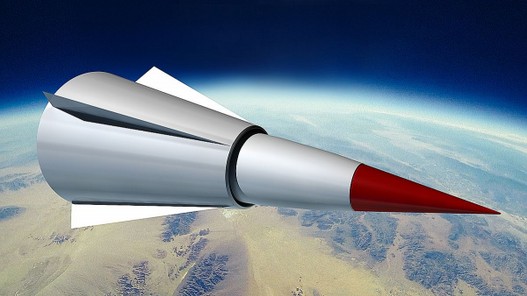 Hypersonic missiles are a new category of weapons that are being developed by the world’s leading military powers.
Hypersonic missiles are a new category of weapons that are being developed by the world’s leading military powers. Armed with either conventional or nuclear warheads, they are almost impossible to intercept with the current technology due to their extremely high speed.
This video by KJ Reports to which I contributed examines the main types of hypersonic missiles currently under development and the strategic rationale justifying their deployment.
Photo credit: WU-14 HGV.jpg, Daniel Toschläger, published under Creative Commons CC0 1.0 Universal Public Domain Dedication.
India’s Nuclear Submarine: The INS Arihant
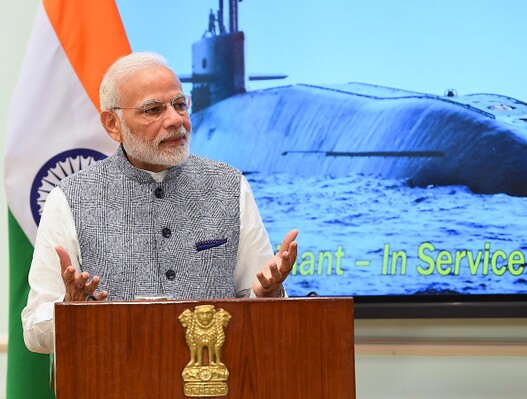 The INS Arihant is India's first nuclear-propelled ballistic missile submarine.
The INS Arihant is India's first nuclear-propelled ballistic missile submarine. While it certainly represents a remarkable progress for India, the Arihant is affected by important design limitations that reduce its actual strategic impact.
Read more about this in my latest Backgrounder for Geopolitical Monitor (subscription required).
Photo credits: PM Modi addressing the crew of INS Arihant.jpg, India's Prime Minister's Office, published under the Government Open Data License - India (GODL).
Japan’s Maritime Self-Defense Force Naval Build-Up
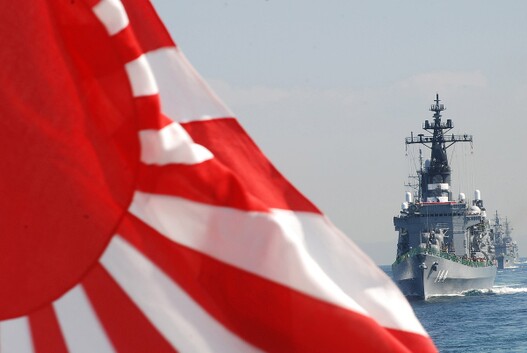 Japan is one of the main naval powers of the Asia-Pacific and a close ally of the US. The maritime branch of its military, officially called the Japanese Maritime Self-Defense Forces (MSDF), is among the world’s most powerful navies.
Japan is one of the main naval powers of the Asia-Pacific and a close ally of the US. The maritime branch of its military, officially called the Japanese Maritime Self-Defense Forces (MSDF), is among the world’s most powerful navies. But with China rapidly rising as a maritime power itself, the MSDF is in the middle of a modernization programme conceived to build-up its capabilities to match the emerging challenge.
Following my article on the PRC's naval upgrade, in this new backgrounder I examine the main aspects of Japan's naval modernization.
Read it here on Geopolitical Monitor (subscription required).
Photo credits: US Navy 091021-N-3283P-190 The Japan Maritime Self-Defense Force helicopter destroyer JS Kurama (DDH 144) leads ships during a rehearsal for the 2009 fleet review. More than 8,000 civilians toured selected ships and viewed the.jpg, U.S. Navy Mass Communication Specialist Seaman Dominique Pineiro, published under public domain.
China’s PLA Navy Modernization
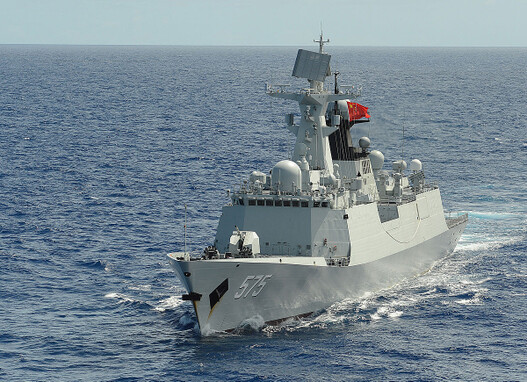 China is rapidly emerging as a major naval power in the Asia-Pacific region, thus challenging the longstanding primacy of the US and Japanese navies.
China is rapidly emerging as a major naval power in the Asia-Pacific region, thus challenging the longstanding primacy of the US and Japanese navies.Yet, the modernization of the People's Liberation Army Navy (PLAN) is far from being completed, and its capabilities still present important deficits.
In this article published on Geopolitical Monitor I examine the strategically most relevant areas of the PLAN's upgrade and I highlight its persisting limitations.
The full article is available here (subscription required).
Photo credits: People's Liberation Army (Navy) frigate PLA(N) Yueyang (FF 575) steams in formation with 42 other ships and submarines during Rim of the Pacific (RIMPAC) Exercise 2014.jpg, U.S. Navy Mass Communication Specialist 1st Class Shannon Renfroe, published under public domain.
The Strategic Implications of Hypersonic Missiles
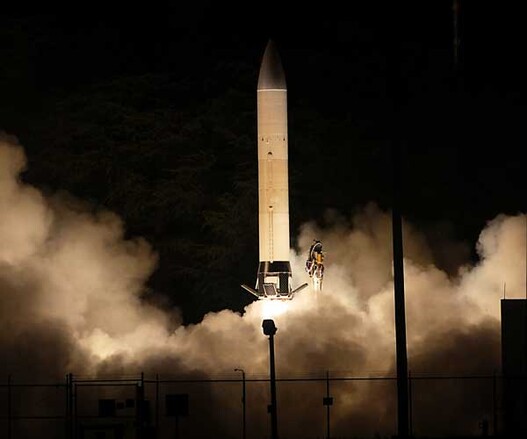 In a context of mounting international tension, the world’s leading military powers (namely the United States and its near-peer competitors, Russia and China) are engaged in an effort to develop new weapons systems. Among them, hypersonic missiles are playing an increasingly important role. This paper examines the strategic impact of hypersonic missiles, in particular in the event of a major crisis involving the three aforementioned powers, in order to raise the awareness on the risks that the deployment of such weapons could have.
In a context of mounting international tension, the world’s leading military powers (namely the United States and its near-peer competitors, Russia and China) are engaged in an effort to develop new weapons systems. Among them, hypersonic missiles are playing an increasingly important role. This paper examines the strategic impact of hypersonic missiles, in particular in the event of a major crisis involving the three aforementioned powers, in order to raise the awareness on the risks that the deployment of such weapons could have.In particular, while such weapons do not alter the MAD-based strategic equilibrium and its logic, in the event of a crisis it is impossible to determine beforehand what would happen due to the inherent ambiguity of these missiles and many other factors, but it is legitimate to believe that hypersonic missiles would favour a preemptive strike logic that could lead to a (possibly nuclear) escalation.
Read the full report here.
The Weaponization of Space
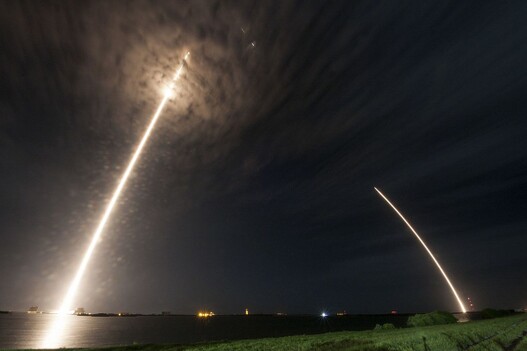 Space: The final frontier, where no conflict has been fought before.
Space: The final frontier, where no conflict has been fought before.In the past few years, both states and firms have shown a renewed interest for space exploration. New ambitious missions have been launched for scientific and commercial purposes, with some aiming even at landing a manned mission on Mars.
But will space also become the final frontier of warfare?
If the topic interests you, watch the video that KJ Reports has crafted on the basis of my analysis.
Photo credit: CRS-9 mission (28348649546).jpg, SpaceX, published under Creative Commons CC0 1.0 Universal Public Domain Dedication.
The Drone Threat in Israel: An Upcoming Ban?
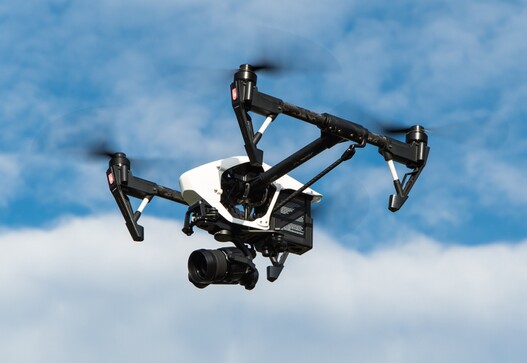 The widespread use of drones has raised concerns that they could be used for carrying out terrorist attacks. The (alleaged) assassination attempt agains Venezuela's President N. Maduro seem to have confirmed the viability of using UAVs as attack vectors. It is to be expected that similar episodes will occour in the future, prompting states to introduce restrictions on their use.
The widespread use of drones has raised concerns that they could be used for carrying out terrorist attacks. The (alleaged) assassination attempt agains Venezuela's President N. Maduro seem to have confirmed the viability of using UAVs as attack vectors. It is to be expected that similar episodes will occour in the future, prompting states to introduce restrictions on their use. In my first article for Israel Defense, I argue that Israel (due to its unique security environment) is probably the most vulnerable target for asymmetric attacks performed with drones. As such, it will likely (and it should) introduce severe regulations on using UAVs on its territory, which may well take the form of a complete ban.
Full article here.
